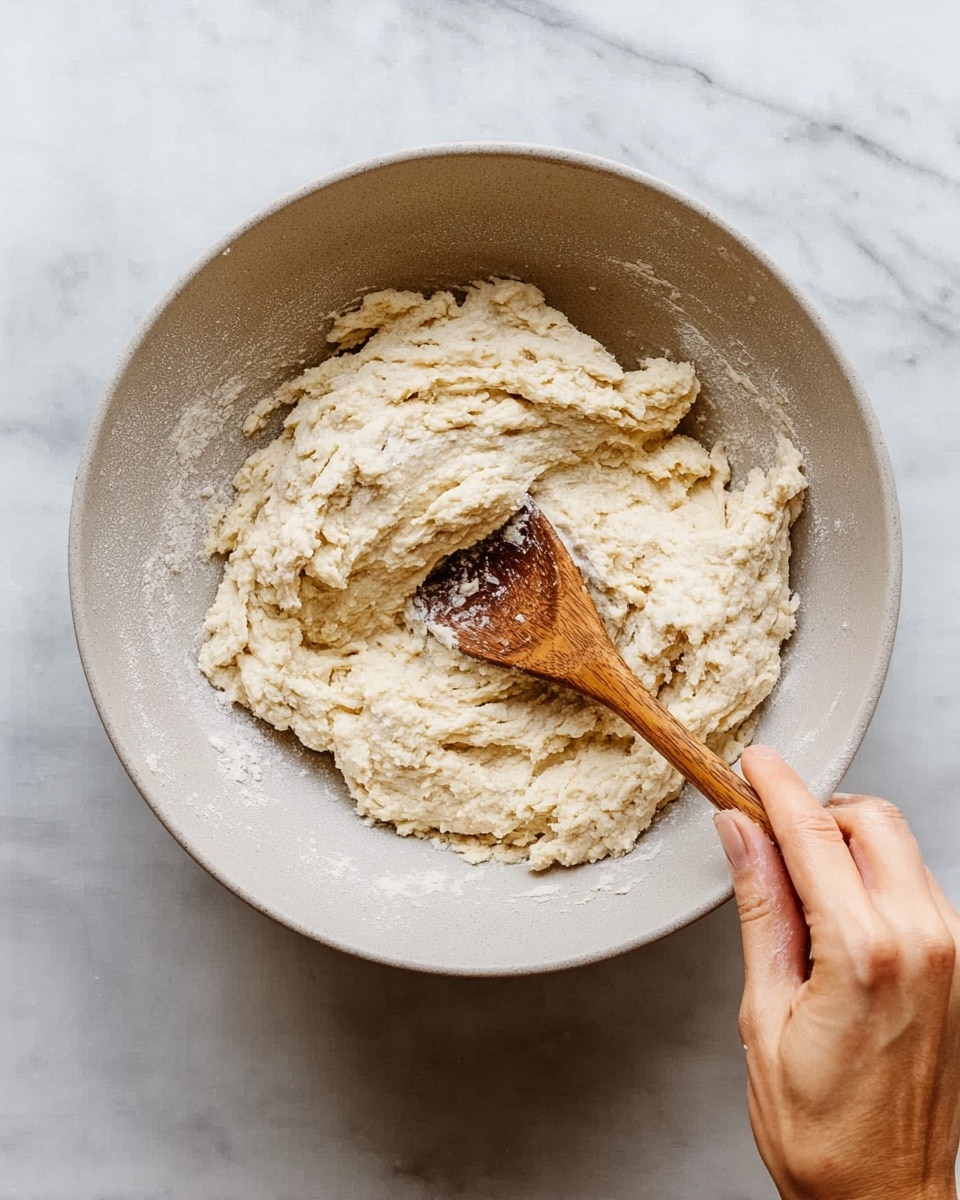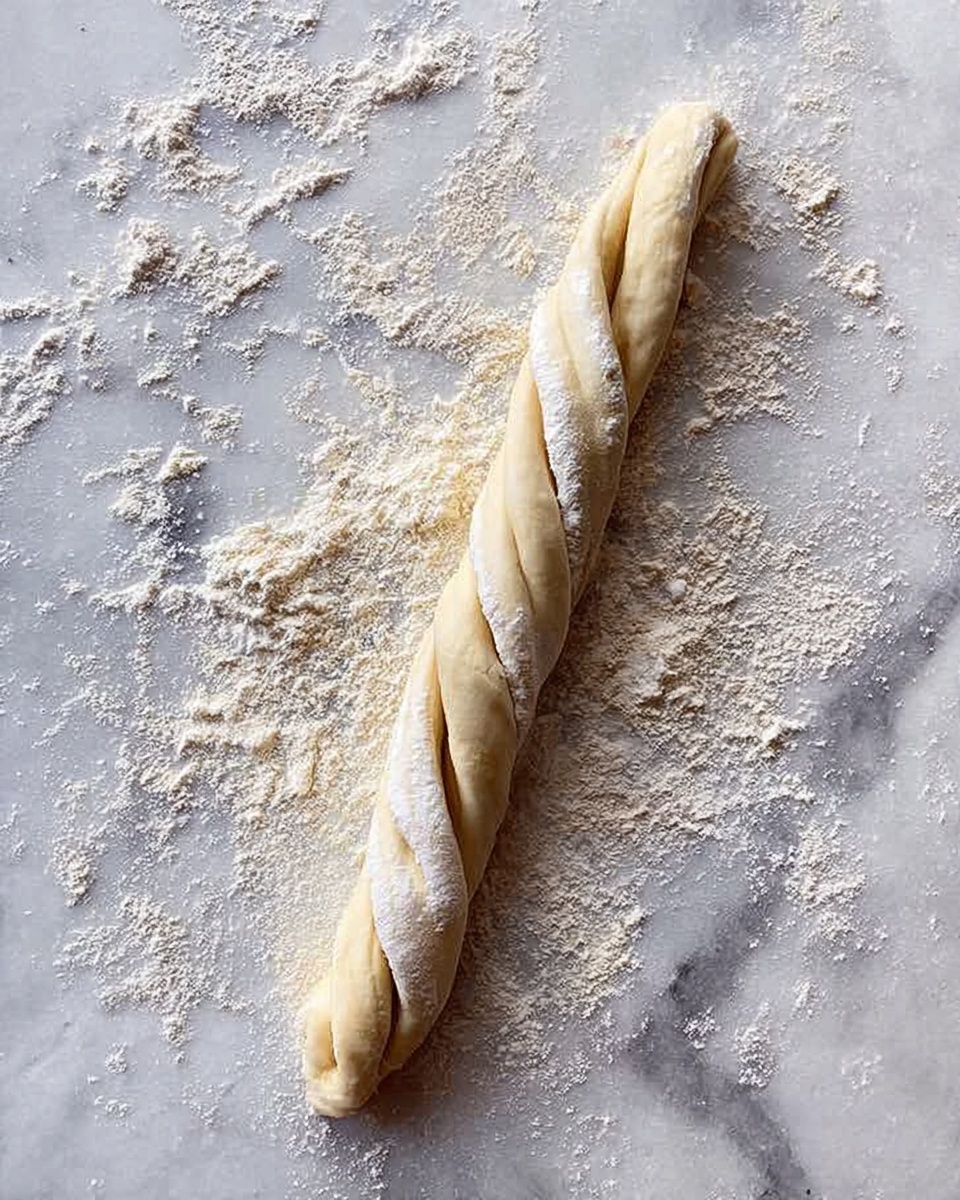I absolutely adore making bread from scratch, and this Homemade Baguette Recipe is one of my all-time favorites. There’s something incredibly satisfying about pulling a crisp, golden baguette right out of the oven — the aroma alone is worth every minute spent. This recipe captures that classic French bread flavor and texture with a surprisingly simple method that anyone can try at home. Whether you’re a seasoned baker or a curious beginner, I promise this baguette will become a staple in your kitchen.
Why You’ll Love This Homemade Baguette Recipe
What makes this Homemade Baguette Recipe stand out for me is the beautifully balanced flavor and that perfect crust-to-crumb ratio. The crust turns gloriously crispy while the inside stays airy and tender, just like the baguettes you’d find in a Parisian boulangerie. I love how the subtle hint of sweetness from the sugar and the gentle saltiness create a flavor profile that’s both simple and deeply satisfying. Plus, letting the dough rest overnight in the fridge develops the flavors even further, giving the bread that extra dimension.
Beyond the delicious taste, this recipe is refreshingly approachable. I especially appreciate how the ingredients are straightforward and pantry-friendly, with no fancy add-ons required. The steps are easy to follow and the kneading can be done by hand or stand mixer, which makes it versatile for anyone’s kitchen setup. I also think homemade baguettes bring a little bit of magic to any meal—whether for a casual weeknight dinner, a holiday spread, or even brunch with friends. It’s a recipe I find myself coming back to time and again.
Ingredients You’ll Need

Only a handful of simple ingredients come together in this Homemade Baguette Recipe to create something truly spectacular. Each one plays a key role in creating the perfect dough texture, golden color, and that classic baguette flavor.
Pro Tip ✨
Check out the full list of ingredients and measurements in the recipe card below.
- All-purpose flour: The backbone of the bread, providing structure and a tender crumb when kneaded just right.
- Salt: Essential for enhancing flavor and controlling yeast activity in the dough.
- Sugar: Adds a touch of sweetness and helps to activate the yeast.
- Active dry yeast: The magic agent that makes the dough rise and develop airiness.
- Warm water: Perfectly warm to activate the yeast without killing it, contributing to the dough’s elasticity.
- Cornmeal or flour for dusting: Keeps the baguettes from sticking and gives a rustic finish to the crust.
Directions
Step 1: In a large bowl, I start by mixing together the flour, salt, and sugar. This dry mix forms the foundation of the dough’s structure and taste.
Step 2: Next, I dissolve the yeast in warm water, about 110°F (43°C), and let it sit until it’s foamy—about 5 to 10 minutes. This shows that the yeast is alive and kicking.
Step 3: I pour the yeast mixture into the dry ingredients and stir everything together until a shaggy dough forms. It’s messy but exciting!
Step 4: Then I knead the dough on a lightly floured surface for 8 to 10 minutes until it feels smooth and elastic. If I’m feeling lazy, I’ll use my stand mixer with a dough hook for about 6 to 8 minutes instead.
Step 5: Once the dough is perfectly kneaded, I shape it into a ball and place it in a lightly greased bowl. Covering it with plastic wrap, I leave it at room temperature to double in size, usually about 1 to 1.5 hours.
Step 6: For an unbeatable depth of flavor, I transfer the dough to the fridge to cold ferment overnight—8 to 12 hours. This step is optional but highly recommended in my book.
Step 7: The next day, I take the dough out and let it gently warm up for about half an hour. Then I turn it onto a floured surface and divide it into two or three equal pieces, depending on how big I want my baguettes.
Step 8: I shape each piece into a rectangle, fold the long sides in like a letter, pinch the seam, then roll it into a long rope about 12 to 14 inches. I taper the ends just slightly for that authentic baguette look.
Step 9: The shaped loaves go onto a parchment-lined baking sheet dusted with cornmeal or flour, covered with a towel, and left to rise again until puffy—around 45 to 60 minutes.
Step 10: I preheat my oven to 475°F (245°C) and place a cast iron skillet on the bottom rack to heat—it’s key for creating steam.
Step 11: Using a sharp knife, I make 3 to 4 diagonal slashes across each loaf, which lets the bread expand beautifully while baking.
Step 12: Right before baking, I pour about 1 cup of hot water into the skillet to produce steam, then quickly close the oven door to trap it.
Step 13: I bake the baguettes for 20 to 25 minutes, until golden and crusty. They should sound hollow when tapped on the bottom. Finally, I let them cool on a wire rack before slicing—though I have to admit, I often sneak a taste while still warm.
Servings and Timing
This recipe yields about 2 to 3 baguettes, perfect for sharing or for savoring over a few days. The total prep time is roughly 1 hour, including mixing, kneading, and initial rising. The bake time is around 25 minutes, while the total time including resting is about 1 hour 30 minutes if you skip cold fermentation. If you choose to refrigerate the dough overnight, plan for an additional 8 to 12 hours of resting time, but trust me—it’s worth it!
How to Serve This Homemade Baguette Recipe

I love serving this baguette fresh and warm so the crust has that irresistible crunch while the crumb is soft and airy. It pairs wonderfully with a variety of dishes, from classic French favorites like cheese plates and charcuterie boards to soups and hearty stews. Try slicing it up for bruschetta or as a simple accompaniment to olive oil and balsamic vinegar for dipping.
If I’m hosting friends, I’ll arrange the baguettes with spreads like herbed butter, tapenade, or even a smoky roasted garlic hummus. Garnishing with fresh herbs or a sprinkle of flaky sea salt on top after baking adds a gourmet touch that impresses every time. For drinks, I typically enjoy it with a crisp white wine like Sauvignon Blanc or a light lager, though a sparkling water with lemon is just as refreshing if you prefer non-alcoholic options.
These baguettes are super versatile in temperature as well — delicious warm for that fresh-out-of-the-oven experience, but they also taste great at room temperature or lightly toasted the next day. I like to keep portions moderate, cutting into 1-inch thick slices, so everyone can sample multiple ways to enjoy this rustic bread.
Variations
I’ve experimented with a few twists on this Homemade Baguette Recipe that you might enjoy. For a heartier loaf, try swapping half of the all-purpose flour with whole wheat flour—just be aware the crumb will be denser and the flavor more robust. If you’re gluten-free, I recommend using a store-bought gluten-free all-purpose blend designed for bread baking and following the manufacturer’s instructions carefully, though texture will differ.
For flavor variety, adding herbs like rosemary, thyme, or even minced garlic to the dough before the first rise can give your baguette a lovely fragrant boost. Some days, I fold in a handful of toasted sesame or poppy seeds right before shaping for a delightful crunch and visual appeal. If you want to avoid using a stand mixer, you can absolutely knead the dough by hand—the tactile experience is one of my favorite parts!
As for cooking methods, while baking on a sheet works wonderfully, some days I use a baking stone to get an even crispier crust. Just be sure to preheat the stone thoroughly. Alternatively, shaping smaller rolls instead of baguettes can be fun and perfect for sandwiches or lunchboxes.
Storage and Reheating
Storing Leftovers
To keep any leftover baguette fresh, I usually wrap it tightly in a clean kitchen towel, then place it inside a paper bag or bread box to allow just enough air circulation and avoid sogginess. Stored this way at room temperature, the bread stays good for about 2 days. Avoid plastic bags for long storage as they trap moisture and soften the crust.
Freezing
This Homemade Baguette Recipe freezes beautifully! After the baguettes have completely cooled, I slice them and wrap each loaf or slices in aluminum foil, then stash them in a freezer bag or airtight container. They keep well frozen for up to 3 months. When ready to eat, you can toast slices directly from frozen, or thaw the whole loaf overnight in the fridge.
Reheating
To refresh the baguette’s crust and crumb, I like to preheat my oven to 350°F (175°C), lightly mist the bread with water, and bake it on a baking sheet for about 8 to 10 minutes. This technique brings back that fresh-baked crunch and warmth without drying it out. Avoid microwaving the bread, as it tends to make the crust chewy and rubbery rather than crisp.
FAQs
Can I use instant yeast instead of active dry yeast?
Yes! Instant yeast can be used as a substitute, generally in a slightly smaller amount—about 25% less—and it can be mixed directly into the dry ingredients without proofing in water first. It may speed up the rising times slightly, so keep an eye on your dough.
What if my dough is too sticky or too dry?
Dough consistency can vary depending on flour brand and humidity. If it feels too sticky to work with, sprinkle in a little flour, a tablespoon at a time, during kneading. If it’s dry and crumbly, add warm water gradually until it’s soft but not tacky. With practice, you’ll get a feel for the perfect texture.
How important is the cold fermentation step?
Cold fermentation overnight is optional but highly recommended. It significantly enhances the bread’s flavor by allowing the yeast and enzymes more time to develop complexity and also improves the dough’s handling. Skipping this step means your baguettes will still be delicious but with a slightly less nuanced taste.
Can I make smaller or larger baguettes?
Absolutely! You can divide the dough into more pieces for smaller baguettes or sandwich rolls, or fewer pieces for larger loaves. Just keep the baking time adjusted accordingly—smaller breads will bake faster, while larger loaves may need a few extra minutes in the oven.
How do I know when the baguettes are fully baked?
The baguettes should be golden brown and sound hollow when you tap the bottom with your finger. Using a thermometer can help too—the internal temperature should be around 200°F (93°C) for fully baked bread. If you’re unsure, letting them bake a couple more minutes usually won’t hurt.
Conclusion
I genuinely hope you’ll give this Homemade Baguette Recipe a try because nothing compares to the joy of biting into fresh, homemade bread. It’s such a rewarding process that fills your kitchen with comforting aromas and leaves you with a loaf that makes every meal a little more special. Happy baking—I can’t wait to hear how your baguettes turn out!
Print
Homemade Baguette Recipe
- Prep Time: 1 hour
- Cook Time: 25 minutes
- Total Time: 1 hour 30 minutes
- Yield: 3 Baguettes
- Category: Bread
- Method: Baking
- Cuisine: French
Description
This Homemade Baguette Recipe teaches you how to create classic French-style baguettes with a crispy crust and tender crumb right in your kitchen. Using a simple mix of flour, yeast, salt, and water, the dough undergoes a slow fermentation process for enhanced flavor and texture. The baguettes are shaped traditionally, scored for proper expansion, and baked with steam to achieve the perfect crust. Ideal for sandwich making or serving alongside soups and cheeses, these comforting baguettes will elevate your baking skills.
Ingredients
Dry Ingredients
- 3 1/2 cups (420g) all-purpose flour
- 1 1/4 teaspoons salt
- 1 teaspoon sugar
Yeast Mixture
- 1 packet (2 1/4 teaspoons) active dry yeast
- 1 1/2 cups (360ml) warm water (about 110°F / 43°C)
For Dusting
- Cornmeal or flour (for dusting)
Instructions
- Mix Dry Ingredients: In a large bowl, stir together the all-purpose flour, salt, and sugar until well combined to prepare the dry mixture for your dough.
- Activate Yeast: In a separate small bowl, dissolve the active dry yeast in warm water (around 110°F/43°C). Let it sit for 5–10 minutes until the mixture becomes foamy, indicating the yeast is active.
- Form Dough: Pour the yeast mixture into the dry ingredients and stir until a shaggy dough forms. Then, transfer the dough to a lightly floured surface.
- Knead Dough: Knead the dough by hand for about 8–10 minutes until it becomes smooth and elastic. Alternatively, use a stand mixer with a dough hook attachment on medium speed for 6–8 minutes.
- First Rise: Shape the dough into a ball, place it in a lightly greased bowl, and cover with plastic wrap. Let it rise at room temperature until doubled in size, approximately 1 to 1.5 hours.
- Cold Fermentation: For enhanced flavor and texture, transfer the risen dough to the refrigerator and let it rest overnight (8–12 hours). This slow fermentation deepens the flavor and improves dough handling. If pressed for time, you may skip this step but expect less complex flavor.
- Shape Loaves: Remove the dough from the fridge and allow it to come to room temperature for 30 minutes. Gently place it on a floured surface and divide it into two or three equal pieces based on desired baguette size.
- Form Baguettes: Shape each piece into a rectangle. Fold the long sides inward like a letter, pinch the seam closed, then gently roll into a long rope approximately 12–14 inches long. Slightly taper the ends for a traditional baguette shape.
- Second Rise: Place the shaped loaves on a parchment-lined baking sheet dusted with cornmeal or flour. Cover with a clean towel and let rise for 45–60 minutes until puffy.
- Prepare Oven and Steam: Preheat your oven to 475°F (245°C). Place a cast iron skillet or metal baking dish on the bottom rack to heat up; this will be used to create steam during baking.
- Score Baguettes: Using a sharp knife or bread lame, make 3–4 diagonal slashes on each baguette. This allows proper expansion during baking.
- Bake with Steam: Right before placing the loaves in the oven, pour about 1 cup of hot water into the preheated skillet to generate steam. Quickly close the oven door to trap the steam and bake the baguettes for 20–25 minutes until golden brown and crusty.
- Cool: Remove the baguettes from the oven and let them cool on a wire rack. They should sound hollow when tapped on the bottom, indicating they are fully baked. Cool completely before slicing to enjoy the best texture.
Notes
- Cold fermentation overnight significantly improves the flavor and texture but can be skipped if short on time.
- Using a stand mixer with a dough hook can reduce kneading time and effort.
- Creating steam in the oven is crucial for developing the traditional crispy crust of the baguette.
- Ensure water for yeast activation is not too hot to prevent killing the yeast; aim for about 110°F (43°C).
- Place the baguette loaves on a parchment-lined sheet dusted with cornmeal or flour to prevent sticking and add texture to the crust bottom.
- Allow baguettes to cool fully before slicing to avoid gummy texture inside.






